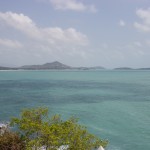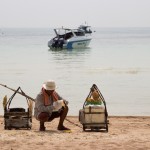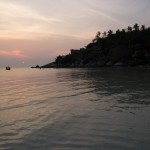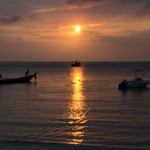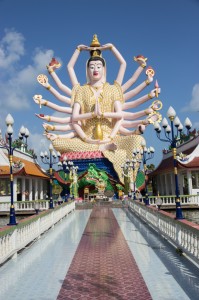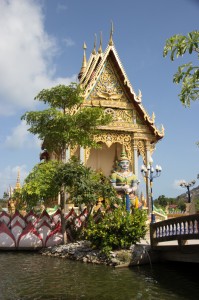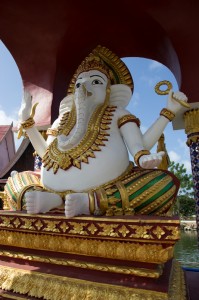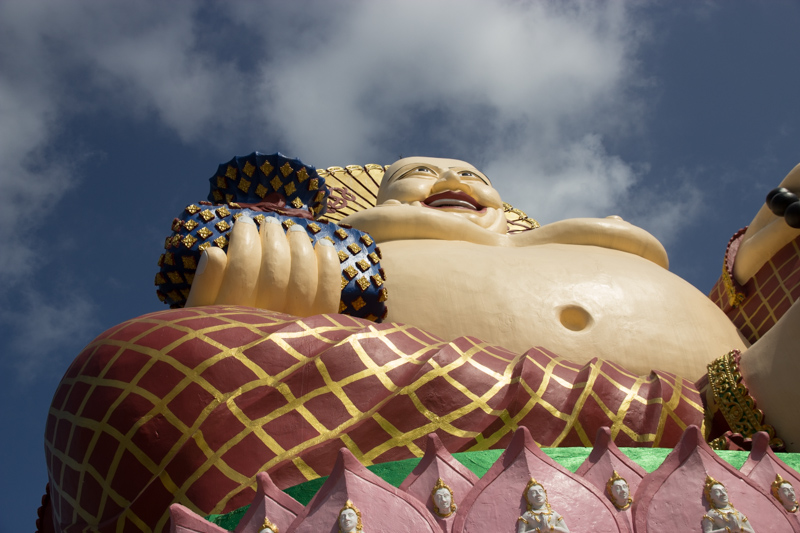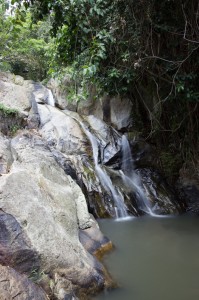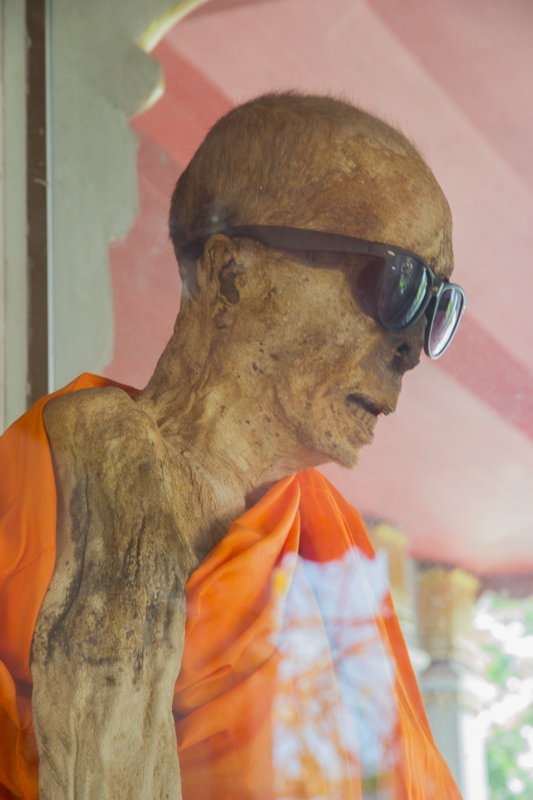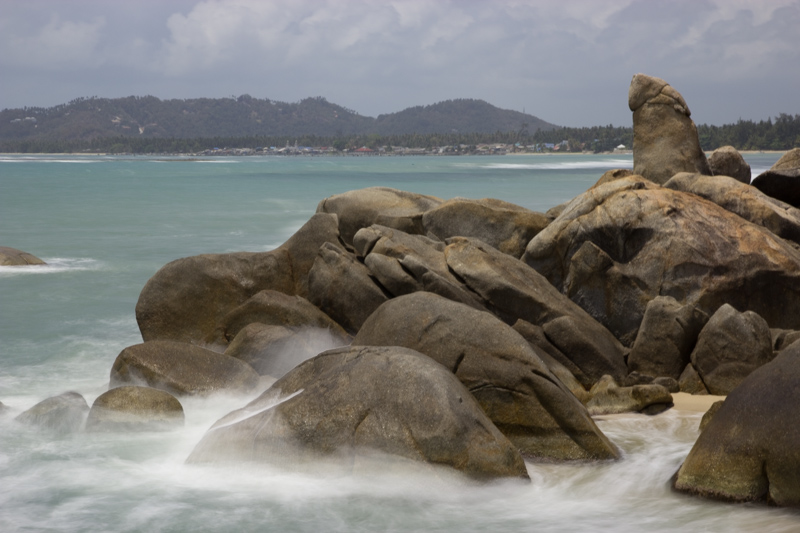We boarded a ferry for Koh Samui. The wind was up and the sea was choppy, so our ride across the water lurched backwards and forwards on the waves. After what felt like an eternity, we stopped at Koh Pha-ngan and swapped ferries for the short stretch to Koh Samui.
The word Koh (or sometimes Ko) literally means island in Thai, which is why you will see it on so many place names.
Arriving ashore feeling a bit peaky, we found some German men headed to the same beach as us, on the far side of the island. This was fortuitous as taxis on these islands are outrageously expensive. To give a little context, a ten kilometre journey in Bangkok would cost £2, whereas a similar journey on the island would cost £12 and that’s after finding a better deal. Some unscrupulous drivers will try and charge upwards of £30!
Koh Samui was a totally different beast from the last island. The small coves and jungle-set resorts of Koh Tao were replaced with white beaches which stretched for miles up the coast. Large resorts and nightclubs spilled out onto the sands, and a much older and varied crowd of tourists wandered up and down the streets which were filled with shops selling more than just the basic conveniences. Art galleries gave way to gift-shops which adjoined electrical shops. Up and down the road that we were staying on, open-sided restaurants grilled fish and meat on large barbeques, and whole hogs turned on spits as the waiters called for you to come in and sit down. As the sun set, the clubs opened and the distant thunder of trance and house echoed in the warm night.
Our first night was spent in a mosquito infested dorm which had no glass in the windows! After a fruitless attempt at sleep that night we checked out early in the morning and found ourselves a much nicer room with AC for the same price! This one luckily had windows and so we booked in for a few days and set off to explore the island.
A local bus company was doing mini-van tours and we booked onto one for £6 each. The tour took us around most of the island, stopping off for ten or twenty minutes at various sites so that we could look around and take photos. We stopped at Buddhist wats (monastic temple complexes) which glittered in the sun. Nearby large Buddhas were sitting on small islands surrounded by a lake filled with enormous carp. Whereas in Nepal the Buddhist holy places were usually clad in gold with either bare stone work or washed in white paint, here in Thailand every wat and temple is inlaid with coloured, mirrored glass which glimmers as you pass. Decorative dragons snake along the roofs and the massive Buddhas are kept clean and freshly painted at all times. The effect is outstanding and it’s impossible to not stop and marvel as you pass.
The feel of these places is very different to holy places in other religions. I find Christian places of worship give an almost painfully strained silence, and the rough-hewn stonework, stark decoration and dim lighting of old churches weigh heavily in the air. Hindu temples, similarly, are also close, stone caverns; but colourful deities and a constant hubbub from the congregation make the experience much less austere. Buddhist temples on the other-hand are airy despite the heavy teak wood that lofts overhead. People come in and sit, or kneel on the red carpets, commit a prayer to one of the many assembled Buddhas, perhaps take a photo then move on. Some people sit in quiet contemplation, and others lay down looking at the colourful mandalas that are painted onto the walls. From the ceiling hang prayer flags which flap gently as the breeze comes in from the large open doorway, and a gentle feeling of ease permeates the building. Nearby, you will occasionally hear the dim reverberation of a gong or the distant echo of a mantra sung by an orange-robed monk and his circle of acolytes. All in all, Buddhism comes across as a much less severe religion. Fervent piety has no place here, just calm, collected meditation and an air of relaxation which fills the mind.
The tour stopped at an elephant park for a while, and whilst the mahouts took care of their charges, washing them down with hosepipes and walking them across the well-trod trails, Nicole and I opted to walk up to the waterfall that the site is famous for. The prevalence of the dry season meant that the waterfall was subdued, but arriving at its base, people were still happy to swim in the plunge pool, sheltered from the scorching heat of the day by a small patch of jungle that surrounded the bottom of the cliff.
The next stop was a little different. Dropped near a small pagoda, we climbed its stairs to see what was inside. Encased in glass was a golden throne, atop of which sat a mummified monk in orange robes. The mummy had a large pair of black sunglasses on, resulting in a slightly comical look. Local legend has it that this Abbott – Dang Piyasilo, was able to foresee his own death. When he died at the allotted time his fellow monks found a note explaining that he would not decompose and should be left upright for future generations to behold. True to the words in the note, the body began to mummify and was taken to the pagoda to inspire future generations of would-be Buddhists.
Next we were taken to an infamous rock situated on the coast. Named the grandfather rock, it was supposedly near another formation called the grandmother rock which we couldn’t see as the tide was in.
Our journey continues up in the north of the country, in the city of Chiang Mai. Here we look forward to a more affordable take on Thailand, without some of the gratuitous commercialism that grips the southern islands so tightly.
